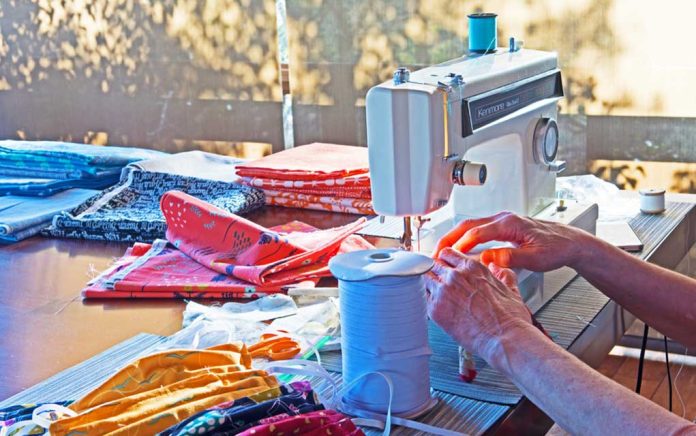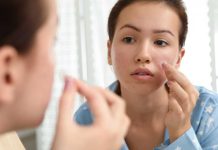
(HealthyResearch.com) – Face masks used to be associated primarily with Halloween and masquerade parties. But the coronavirus pandemic has turned the use of face masks into a way to help prevent the spread of germs. Learn how to make your own face covering. We’ve got some DIY options for you.
CDC Face Mask Recommendations
The Centers for Disease Control and Prevention (CDC) suggest wearing cloth face masks in environments where you are interacting with other community members, such as pharmacies and grocery stores. Cloth face coverings can help reduce the transmission of the virus; they can prevent people who have the virus from spreading it to others.
Because medical first responders and healthcare workers need surgical masks and N-95 respirators, the CDC recommends everyone else to use simple cloth face masks. You can even make your own mask without any sewing skills.
DIY Masks: No Sewing Required
You don’t need to be a seamstress to create a face mask. You can create face coverings without sewing using items such as a bandana or even an old T-shirt.
The Surgeon General made a YouTube video showing how to create a no-sew face using material you may already have at home. Just fold an old T-shirt, bandana, scarf, or even a hand towel several times. Use rubber bands on each end to secure the face mask.
CDC DIY Mask:
The Masks For All website also has several face-covering patterns that don’t require sewing. You can even use a paper towel as a removable filter. Be sure to toss that paper towel after each use. They also have a bandana design and an easy, no-sew T-shirt mask.
T-Shirt Mask:
In addition, fashion designer and Project Runway alum Amanda Perna created a tutorial for making a face mask without sewing for Good Housekeeping. You will need a bandana or square of cotton fabric and rubber bands, hair ties, shoelaces or string. Optional additions include a coffee filter and twist tie, paper clip, or metal piece (for a nose pinch).
Amanda Perna’s No-Sew Face Mask Designs:
How to Make Sewn Face Masks
Those who sew can choose from various patterns utilizing different materials.
The New York Times offers a pattern that requires a minimum of 20 by 20 inches of 100% cotton fabric. Options for securing the mask include cotton fabric, shoelaces, or flat sewing elastics. This video might help you:
How to Use Face Masks
Now that you have your new face mask, it’s just as important to learn how to use that face covering. Wash your hands thoroughly before you put on your face mask. When you are wearing your face-covering in public, keep your hands away from the outside of your mask to prevent germ exposure.
When you remove your mask, remove it by using the bands. Avoid touching the front of the covering as well as your face. Wash your hands after removing the mask.
Studies have shown that masks fail when people touch the front of the mask or adjust it when they are in public, Dr. Daniel Griffin at Columbia University, an expert on infectious diseases, told NPR.
How to Clean Your Face Mask
Cleaning your face mask is also important to prevent the infection. Wash your mask after each use, just as if it is underwear, said Dr. Griffin.
“You don’t take this dirty mask off, put it in your purse and then stick it back on your face,” he pointed out. “It’s something that once you put on, is potentially either touching your coughs, sneezes or the spray of your speech or protecting you from the coughs, spray, speech of other people. And now it’s dirty. It needs to basically be either discarded or washed.”
You don’t have to be a skilled seamstress to create a mask. You can help to flatten the coronavirus curve by wearing even the simplest homemade face covering when you go out. Follow the guidelines for using and cleaning your face mask to reduce the risk of contamination.
~Here’s to Your Health & Safety!
Copyright 2020, HealthyResearch.com
















